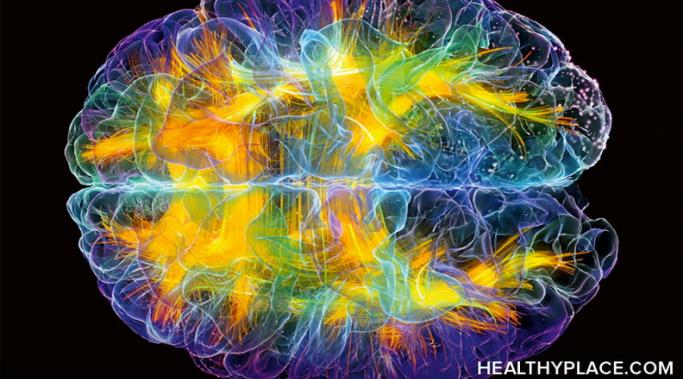Back in February, I wrote a post called "Are You Sensitizing Your Amygdala?", which was all about how your amygdala (the instinctual threat center of your brain) gets highly sensitized in PTSD and then finds and seeks threat constantly - even when there really isn't anything to feel threatened by. Recent advances in neuroscience have proven that while the amygdala changes to a sort of hyper-function in PTSD, it can change again in recovery.
PTSD Treatments
You decide you want to heal from PTSD. You've had enough of living with high anxiety, nightmares, depression, emotional mood swings, the feeling that just stepping out of your house brings on an avalanche of overstimulation. So you pull up your bootstraps, tighten your belt, strap yourself in and take the plunge: You reach out for help, receive your diagnosis, educate yourself about treatment options, choose one, find the right practitioner, start your sessions and..... find yourself full of all kinds of contradictory feelings.
Last week, I wrote about how trauma affects children and what symptoms to look for in identifying a trauma reaction in a child. This week, I'm continuing the children and trauma/PTSD theme by examining treatment options.
As in my earlier post, this information comes from an expert in helping children with PTSD, my colleague Bill Krill, author of Gentling: A Practical Guide to Treating PTSD in Abused Children.
There is a relationship between PTSD and OCD, but sometimes the obsessive-compulsive behaviors sneak up on you and so it's not so obvious. Have you noticed, since your trauma, that you have new, idiosyncratic behaviors, even ones that don't make sense? Do you clean (yourself or your home) obsessively? Does everything suddenly have to be perfect?
Following a trauma, it's normal for your behavior to change in response to the new experience you've had. The question is, how do you move past that?
Recent developments in the field of neuroplasticity prove how your brain is hardwired and genetically designed to heal, change and rewire itself after all types of traumas, including brain injury and stroke. Research also explains very explicitly how your brain changes, which means it also illustrates how you can collaborate with your brain and support it's posttraumatic growth and development.
In last week's post I described the two parts of your brain, how they function, how they're different and how and why talk therapy fails to do the deep work of healing that PTSD requires. After reading that you may wonder: Great, what do I do now??
While there is no single guaranteed way to heal PTSD (we're all different in how we experience trauma and process information and emotion) there are some terrific PTSD treatment processes that can bypass your critical, rational mind and engage your deeper brain in enormously healing ways.
The truth is every experience you have - both the bad and the good - impact your brain in important ways by creating a physiological environment as well as neural pathway structures.
You already know how trauma has negatively impacted you and led to uncomfortable and even painful feelings and body experiences. Have you considered the beneficial impact of positive experiences and how they can help you feel better?
The majority of survivors begin PTSD recovery in traditional talk therapy. It's a natural place to start. As a society, we're very in tune with 'therapy' and the idea of talking to a professional when something is wrong emotionally and we don't know how to fix it. But is talk therapy really effective in healing PTSD? The answer is, NO. Here's why...
If you have PTSD then you know what it’s like to feel unable to control your emotions. You’re walking along having a fine day when all of a sudden you hear a siren or a car backfires and you hit the deck or hide in the bushes.
Or, you’re feeling completely at ease in a conversation with someone and then all of a sudden a huge wave of anger courses through you and you react with vicious words and vehement aggression.
What’s happening in these instances? Your brain is processing information that makes it feel in danger, which causes it to send messages to your body, which activates your sympathetic nervous system that leads you to respond in either fight, flight or freeze.
Bottomline: Typical of anyone with PTSD you’re having trouble regulating your emotions. Not to worry, there are ways to counteract this.
During my own PTSD recovery I studied - a lot! I read all I could get my hands on about trauma psychology and recovery theory. Some of my favorite current authors: Judith Herman, Babette Rothschild, Peter Levine and Robert Scaer. (Most of whom I've now interviewed on my radio show, YOUR LIFE AFTER TRAUMA.)
While I focused on the current authors, I also delved back into the past, reading the fathers of trauma theory, including Jean-Martin Charcot and Pierre Janet.
One of my fave quotes that made me feel soooo much better actually came from a comment made back in 1881...









